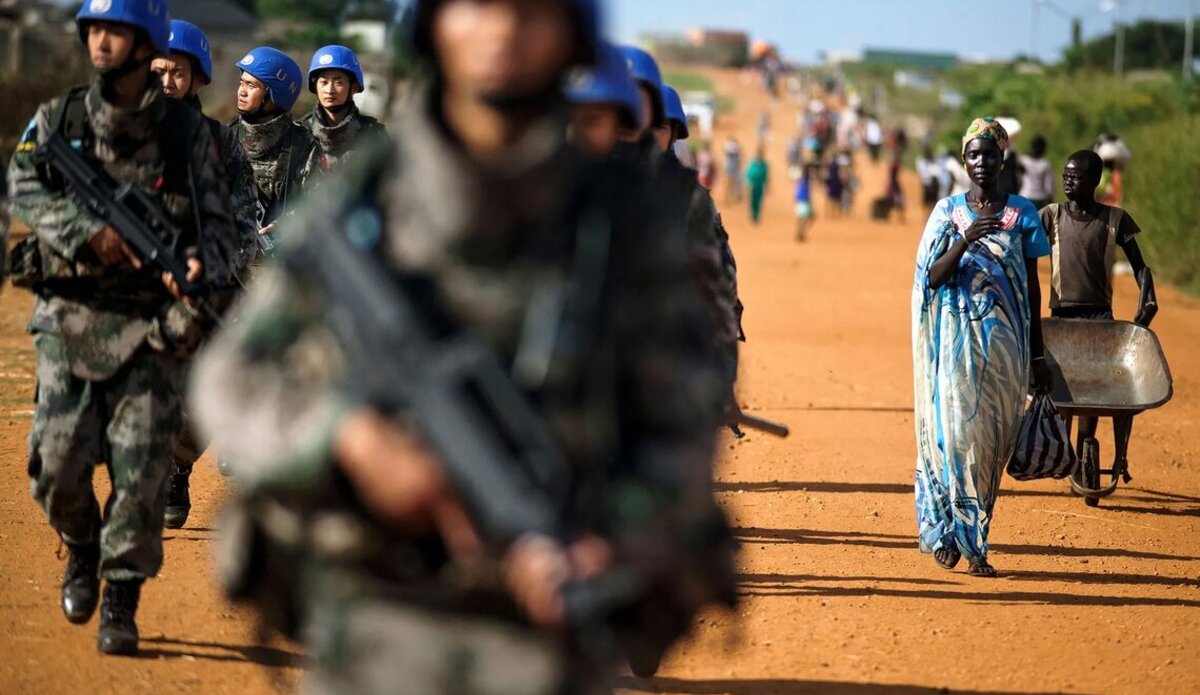Written by the UN Peacekeeping’s Protection of Civilians (POC) team in the Division of Policy, Evaluation and Training (DPET) at UN headquarters in New York. The team provides resources, expertise and support to UN peacekeeping missions, UN member states and bodies such as the Security Council, and other stakeholders working to protect civilians in conflict.
Twenty-five years ago, the United Nations Security Council decided that the protection of civilians (POC) in armed conflict was an issue of international peace and security, and it tasked the UN Mission in Sierra Leone (UNAMSIL) with the first explicit mandate to protect civilians from threats of physical violence. Prior to this, peacekeeping missions helped protect populations through key activities like monitoring ceasefires, disarming combatants, and supporting peace negotiations, but were not authorized by the Security Council to intervene with force to protect populations.
This was a groundbreaking step, establishing the protection of civilians as a core responsibility for UN peacekeeping missions operating in conflict zones. Today, this role remains critical, as conflicts have surged globally, with catastrophic effects on civilian populations, including an alarming 72 percent rise in civilian deaths in 2023 alone.
National state authorities are responsible for protecting the population in their territory, and peacekeepers support them to do so. However, in some peacekeeping contexts where host states are unwilling or unable to fully meet this responsibility, the Security Council empowers peacekeepers to step in. In these cases, peacekeeping missions are authorized to prevent and stop threats of physical violence against civilians, including through the use of force when needed.
In missions with a POC mandate, all peacekeepers - civilian, police and military – are responsible for protecting civilians. They coordinate with each other as well as with local authorities and UN staff outside the mission. And while peacekeepers are not resourced to protect all populations at all times, peacekeeping missions use all their available tools to prevent conflict before it starts and protect those most at risk from violence.
Over the past 25 years, the POC mandate has become a cornerstone of UN peacekeeping operations, shaping how missions prevent and respond to violence against civilians. Sixteen peacekeeping missions have been mandated to protect civilians, including five missions deployed today in the Central African Republic (MINUSCA), the Democratic Republic of the Congo (MONUSCO), Lebanon (UNIFIL), Abyei (UNISFA), and South Sudan (UNMISS).
To commemorate this 25-year journey, UN peacekeeping is launching the Profiles in POC campaign that will, over the next few months, share a collection of personal stories and reflections showcasing POC efforts on the front lines. The series traces the evolution of the mandate from its inception in 1999 to the present day. From field operations in conflict-affected areas to strategic decision-making at the UN Security Council, the stories capture the breadth of contributions from those advancing the POC mandate. Each profile reveals a unique narrative, shedding light on the challenges, successes, and lessons learned in ongoing efforts to protect civilians from the violence of war.
The stories honour the commitment of all those working to uphold the POC mandate and remind us of the immense dedication and resilience of peacekeepers, uniformed and civilian, and peacekeeping stakeholders.
As we reflect on 25 years of progress, we invite you to explore these profiles and learn more about the people behind the mandate who work tirelessly to protect civilians and promote peace amidst some of the world’s most challenging conflicts.
Visit the protection of civilians website to read the profiles as they are posted.

